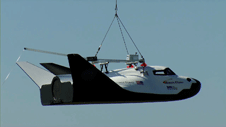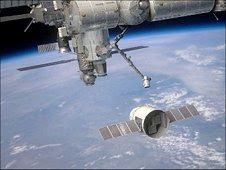
Sierra Nevada Corporation (SNC) Space Systems' Dream Chaser design passed one of its most complex tests to date with a successful captive-carry test conducted near the Rocky Mountain Metropolitan Airport in Jefferson County, Colo., on May 29.
Just like the space shuttle before it, SNC's Dream Chaser will go through extensive testing to prove its wings will work. The company built a full-scale flight vehicle of the Dream Chaser spacecraft to carry out the evaluations.
Backdropped by skyscraping summits, an Erickson Air-Crane helicopter lifted the full-scale orbital crew vehicle to verify proper aerodynamic flight performance. Future plans call for the flight vehicle to be released to evaluate the design's handling during the landing phase of a mission.
The captive-carry test marks the completion of another milestone for the Dream Chaser Space System as part of the Commercial Crew Development Round 2 (CCDev2) agreement with NASA's Commercial Crew Program (CCP).
"This is a very positive success for the Dream Chaser team and their innovative approach. I applaud and encourage the designers and engineers to continue their efforts in meeting the objectives of the rest of their CCDev2 milestones," said Ed Mango, CCP program manager.
Read more on http://www.nasa.gov/exploration/commercial/crew/snc_captivecarry.html
Just like the space shuttle before it, SNC's Dream Chaser will go through extensive testing to prove its wings will work. The company built a full-scale flight vehicle of the Dream Chaser spacecraft to carry out the evaluations.
Backdropped by skyscraping summits, an Erickson Air-Crane helicopter lifted the full-scale orbital crew vehicle to verify proper aerodynamic flight performance. Future plans call for the flight vehicle to be released to evaluate the design's handling during the landing phase of a mission.
The captive-carry test marks the completion of another milestone for the Dream Chaser Space System as part of the Commercial Crew Development Round 2 (CCDev2) agreement with NASA's Commercial Crew Program (CCP).
"This is a very positive success for the Dream Chaser team and their innovative approach. I applaud and encourage the designers and engineers to continue their efforts in meeting the objectives of the rest of their CCDev2 milestones," said Ed Mango, CCP program manager.
Read more on http://www.nasa.gov/exploration/commercial/crew/snc_captivecarry.html



